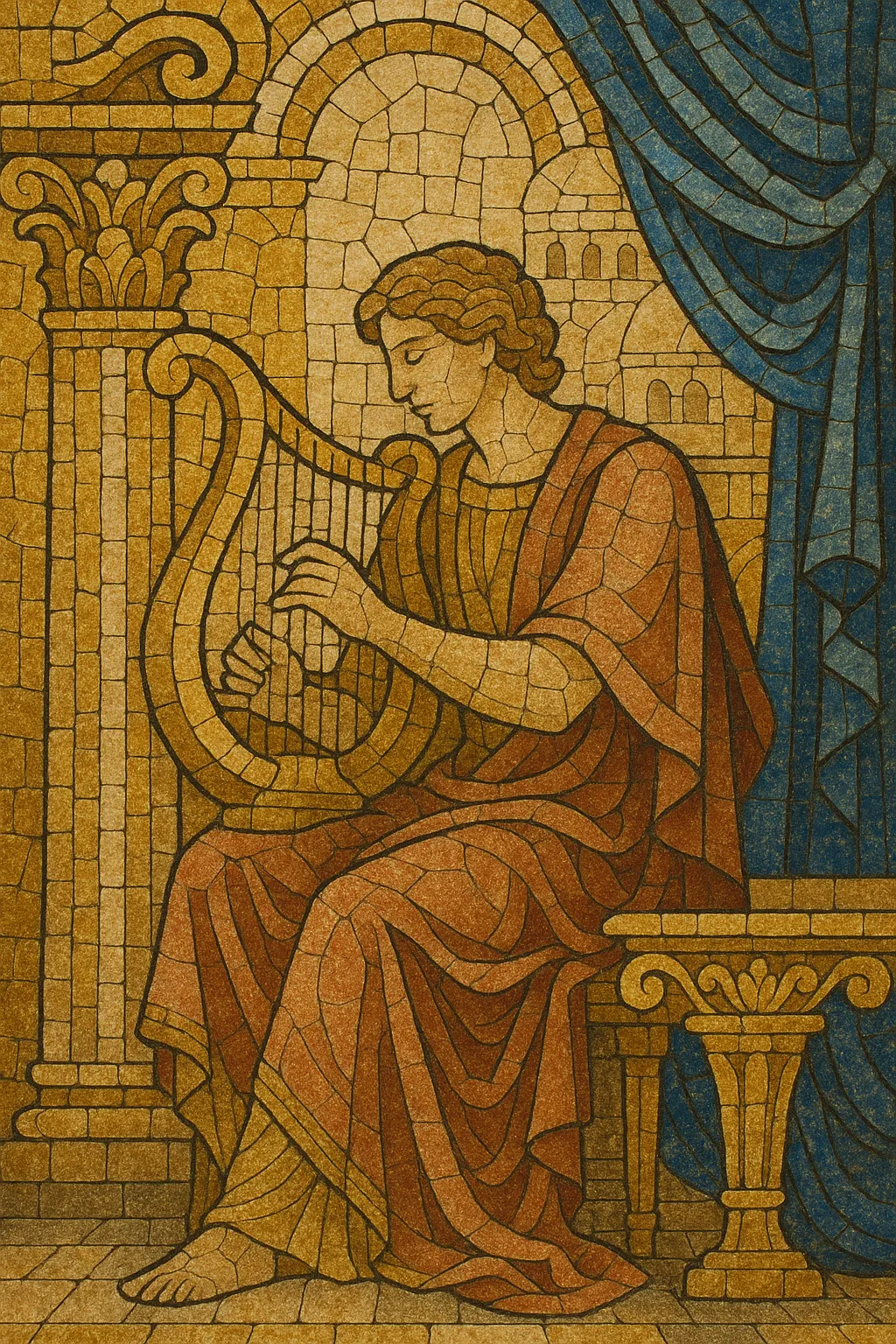Regalia is a vaporwave-adjacent microgenre that aestheticizes opulence, ceremony, and “royal” grandeur. Its sound palette favors lush orchestral and choral samples, gilded easy-listening strings, and high-end lounge textures that are slowed, detuned, and drenched in reverb to evoke a sense of stately luxury.
Where classic vaporwave fixates on mall ambience and corporate ephemera, regalia redirects that nostalgia toward gala halls, boutique fashion campaigns, and palace-like interiors. The result is music that feels ceremonious yet dreamlike—equal parts velvet-rope exclusivity and hazy memory—built from classical flourishes, soft-jazz harmony, and plush production techniques.
Regalia emerged online in the early-to-mid 2010s as vaporwave’s visual world diversified beyond malls and office parks. Netlabels and community forums began circulating releases that leaned into aristocratic imagery—crests, marble statues, velvet textures—and sampled orchestral and choral materials alongside soft-jazz and easy-listening cues. This gave rise to a sound that felt more ceremonial and "gala-ready" than the fluorescent retail spaces typical of early vaporwave.
As artists explored these motifs, a loose set of stylistic norms formed: slow to mid-tempo beats, time-stretched orchestral swells, glossy string pads, and bell-like melodies framed by cavernous reverb. Cover art and typography often referenced heraldry and couture branding, positioning regalia as vaporwave’s luxe, ceremonial counterpart.
While remaining niche, regalia became a recognizable tag in Bandcamp/Discord communities and playlist culture. Cross-pollination with slushier ambient strains and lounge-forward barber beats refined the production, pushing the genre toward smoother rhythm sections, deeper stereo staging, and more cohesive, album-length statements. Today, regalia persists as a micro-scene devoted to opulent nostalgia—an imagined soundtrack for candlelit corridors and gold-leaf foyers.
Start with orchestral, choral, or easy-listening string samples (library cues, vintage light-music records, or royalty-free orchestral beds). Favor lush, consonant sonorities—maj7, 9ths, and 13ths—layered with soft pads and bell tones. Aim for a "gilded" timbre: silky high-end, warm mids, and restrained low-end.
Keep tempos slow-to-mid (60–95 BPM). Program understated, plush drum patterns with gentle kicks, brushed or rimshot snares, and minimal hi-hats. Use long tails of reverb and tasteful delay for ceremonial spaciousness. Subtle vinyl noise, tape hiss, and hall IRs help evoke antique opulence.
Time-stretch and pitch-shift source material to create dignified, elongated phrases. Employ looping motifs like string cadences or choral swells that feel processional. Arrange in suites that flow like rooms in a palace—intro fanfare, grand hall, private salon—while maintaining a soft, dreamlike pacing.
Prioritize wide stereo imaging and layered reverbs (plate + hall). Use gentle bus compression and light saturation to glue layers without harshness. Avoid aggressive transients; everything should feel velveteen and ceremonious.
Titles, artwork, and typography should suggest heraldry, couture, and ceremonial grandeur (crests, marble, velvet, gold-foil accents). Treat the release as a curated gala—cohesive motifs, refined pacing, and a luxurious, nostalgic mood.


